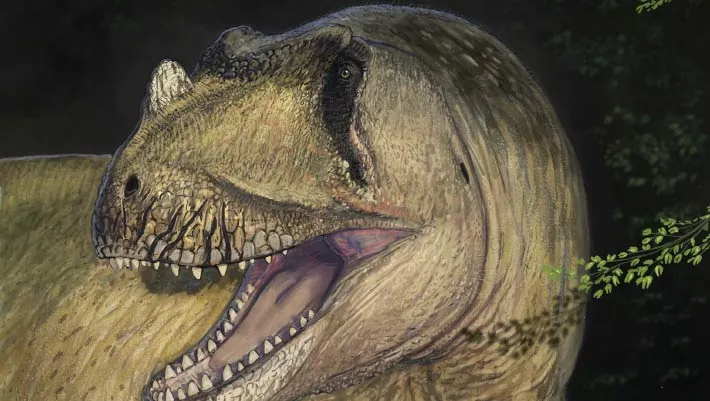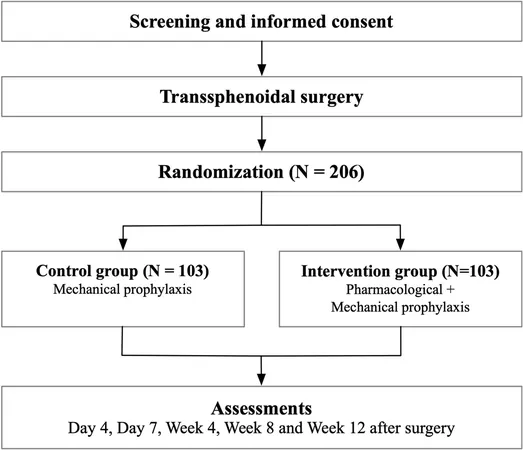
New Predator Dinosaur Discovered in Egypt: Meet Tameryraptor markgrafi!
2025-01-17
Author: Nur
New Predator Dinosaur Discovered in Egypt: Meet Tameryraptor markgrafi!
Paleontologists have unveiled an exciting new genus and species of predatory dinosaur known as Tameryraptor markgrafi, based on historical representations of its now-lost specimen from Egypt’s Bahariya Formation. This discovery sheds light on a fascinating piece of Cretaceous history stretching back about 95 million years.
Tameryraptor markgrafi, a member of the formidable Carcharodontosauridae family, was identified from fossils first unearthed in 1914, near Ain Gedid in the Western part of the Gebel Harra area. These remains, which included skull fragments, vertebrae, and some of the dinosaur's limbs, were initially described by renowned German paleontologist Ernst Stromer von Reichenbach. Interestingly, during his initial study in 1931, Stromer mistakenly classified the dinosaur as Carcharodontosaurus saharicus, a name that has now been corrected by the latest research.
“Back in the 1930s, Stromer made groundbreaking discoveries regarding the Carcharodontosauridae from Northern Africa,” stated lead author Dr. Maximilian Kellermann. “However, the original specimen was unfortunately lost during World War II, leaving behind only Stromer’s descriptions and an endocast of the braincase stored in Berlin.”
The researchers utilized these historical images and descriptions for their re-evaluation, revealing that Tameryraptor markgrafi was quite distinct from later Carcharodontosaurus finds from Morocco. Dr. Kellermann and his team discovered that this dinosaur measured nearly 10 meters (about 33 feet) long, boasted symmetrical teeth, and featured a striking nasal horn, indicating it must have been a formidable predator in its habitat.
Moreover, Dr. Oliver Rauhut, another senior author of the study, highlighted that Tameryraptor markgrafi was closely related to predatory dinosaurs found in both North Africa and South America, as well as to a group known as metriacanthosaurs from Asia. "This revelation suggests that the dinosaur fauna in North Africa was far more diverse than we had previously imagined," Rauhut remarked.
This fresh understanding also emphasizes the importance of revisiting old archives in paleontology, suggesting that there are likely more hidden treasures within historical findings that could reshape our understanding of prehistoric life. However, to gain a comprehensive picture of the dinosaur diversity in this region, additional fossil discoveries from the Bahariya Oasis are essential.
The remarkable study has been published in the renowned journal PLoS ONE, inviting both enthusiasts and scholars alike to delve deeper into the ancient ecosystems of the Cretaceous period. As researchers continue to explore, who knows what other prehistoric giants await discovery? Stay tuned for future revelations!





 Brasil (PT)
Brasil (PT)
 Canada (EN)
Canada (EN)
 Chile (ES)
Chile (ES)
 Česko (CS)
Česko (CS)
 대한민국 (KO)
대한민국 (KO)
 España (ES)
España (ES)
 France (FR)
France (FR)
 Hong Kong (EN)
Hong Kong (EN)
 Italia (IT)
Italia (IT)
 日本 (JA)
日本 (JA)
 Magyarország (HU)
Magyarország (HU)
 Norge (NO)
Norge (NO)
 Polska (PL)
Polska (PL)
 Schweiz (DE)
Schweiz (DE)
 Singapore (EN)
Singapore (EN)
 Sverige (SV)
Sverige (SV)
 Suomi (FI)
Suomi (FI)
 Türkiye (TR)
Türkiye (TR)
 الإمارات العربية المتحدة (AR)
الإمارات العربية المتحدة (AR)